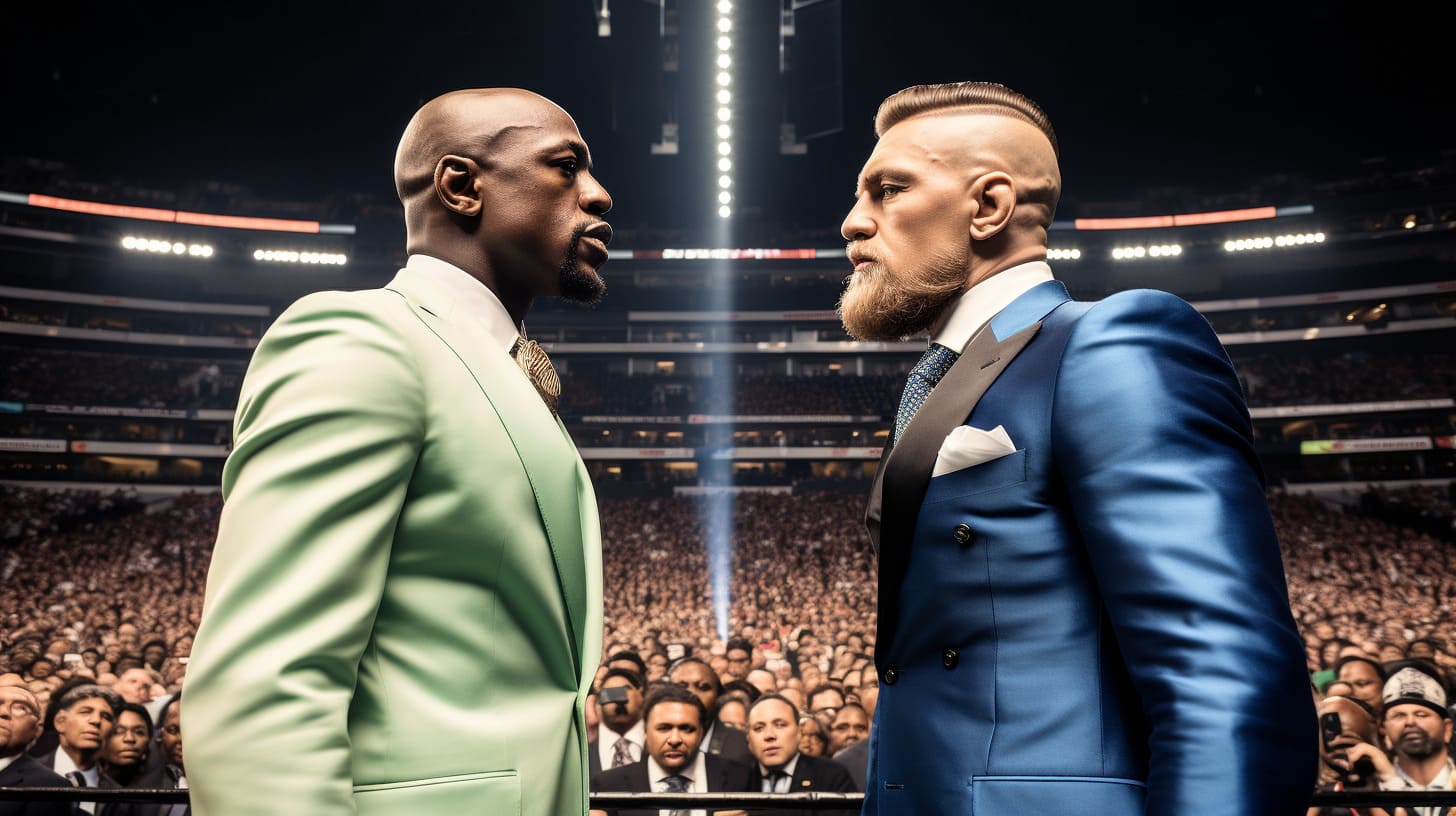Ah, the world of boxing! Just when you think it can’t evolve further, the landscape shifts. Enter: Crossover Boxing. A unique blend of traditional boxing and the influence of today’s celebrities. Dive in as we answer the question of “What is crossover boxing?” and explain this captivating phenomenon.
What is Crossover Boxing?
Crossover boxing isn’t your grandparent’s fight night. It’s where celebs, influencers, and athletes from non-boxing realms step into the ring. They’re not just throwing punches; they’re blending sport and spectacle.
Definition of Crossover Boxing
Crossover boxing involves individuals from non-boxing backgrounds (e.g., social media, entertainment) participating in boxing matches primarily for entertainment and promotional value.
Why is it Popular?
Crossover boxing is the new kid on the block, but it’s already the talk of the town. Why? Let’s break it down.
- Celebrity Influence: Familiar faces in unfamiliar settings? It’s a recipe for intrigue.
- Marketing Magic: The build-up, the banter, the drama – it’s a marketer’s dream.
- Fresh Audience: New faces bring new fans. The sport isn’t just for purists anymore.
The Concept of Crossover Boxing
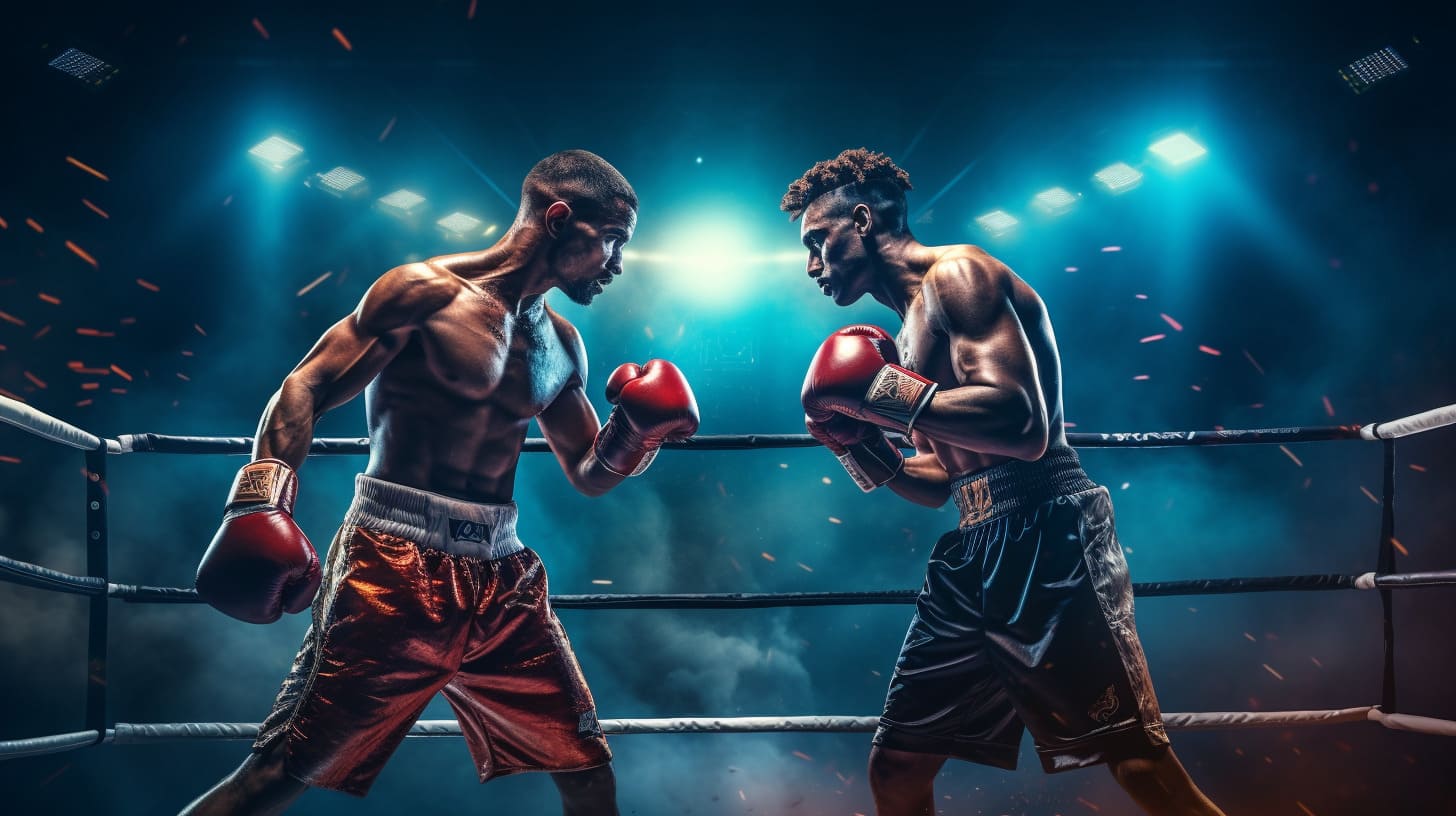
Crossover boxing is a contemporary phenomenon that has emerged as an exciting form of sports entertainment. In this format, athletes from different codes, such as MMA fighters, professional wrestlers, or even social media personalities, step into the boxing ring to compete against each other or against pro boxers. This blending of backgrounds and skill sets has attracted fans from across the globe, providing an intriguing twist to traditional boxing.
The entertainment side of crossover boxing cannot be understated. These events often involve high-profile celebrities and athletes, garnering significant media attention and drawing large audiences. The added element of showmanship and intrigue makes for quite a spectacle. It’s important to note that while crossover boxing holds great entertainment value, it does not necessarily adhere to the same standards as professional boxing.
In the world of pro boxing, strict regulations and training standards are in place to ensure the highest level of skill, experience, and safety for the athletes involved. In contrast, crossover boxing participants may not possess the same level of expertise or commitment to training. As such, boxing purists often view these events as diluting the integrity of the sport.
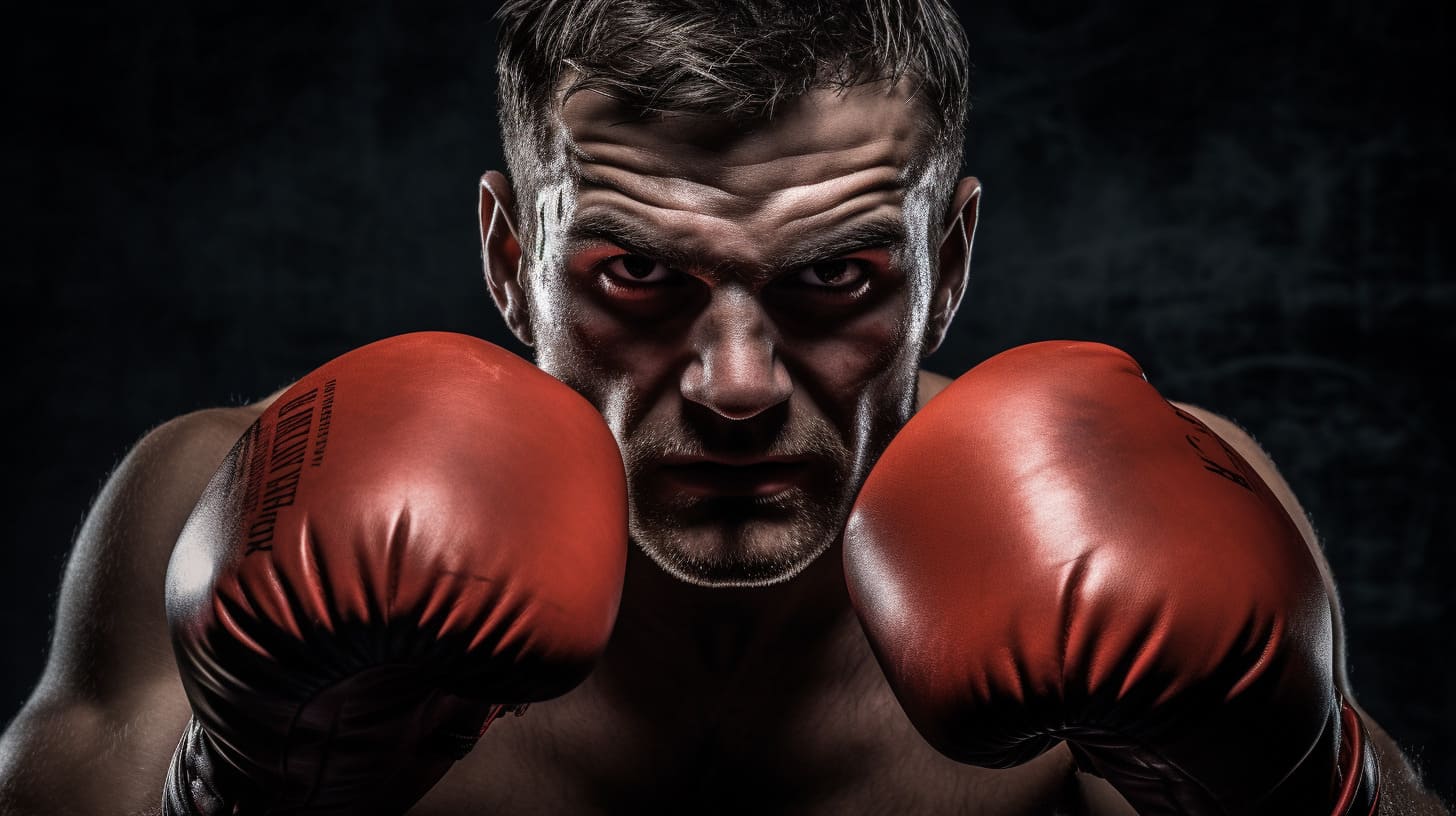
However, crossover boxing is not without its merits, as it brings a fresh perspective and highlights the different strengths of athletes from various disciplines. Keeps the text briefWhile some matches may demonstrate disparities in skill or technique, the unique pairings and unpredictable outcomes make for thrilling entertainment. Furthermore, crossover boxing has the potential to introduce new fans to the world of boxing and generate interest in the sport as a whole.
In conclusion, crossover boxing straddles the line between pure athletic competition and sports entertainment, offering a novel way to engage with the sport. Although it may not always adhere to traditional boxing standards, its ability to garner attention and create memorable matchups can be seen as a net positive for the ever-evolving landscape of boxing and sports entertainment.
Notable Crossover Boxing Figures
In crossover boxing, various individuals from different backgrounds compete in the ring, drawing attention to the sport and themselves. These figures can be grouped into influencer boxers, professional boxers, and participants from other fields.
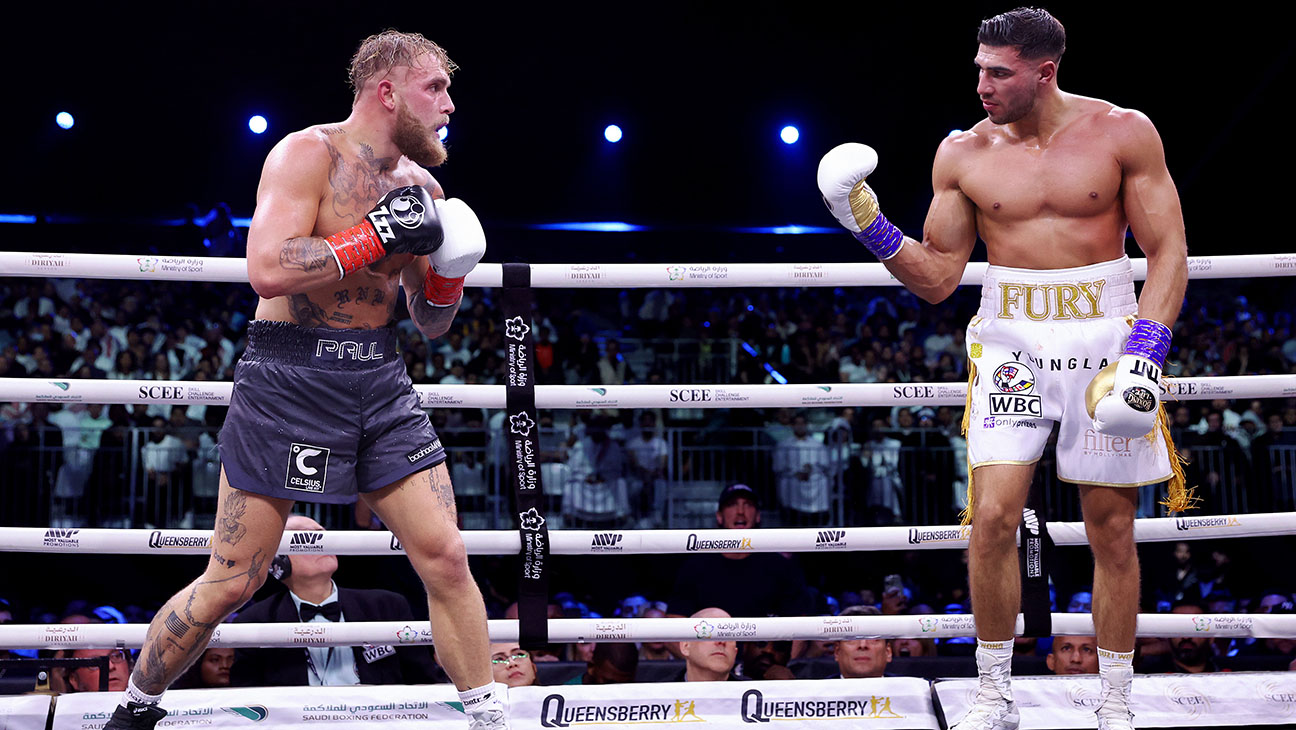
Influencer Boxers
YouTubers, like KSI and Logan Paul, have taken the world of crossover boxing by storm. With their impressive social media following, they’ve been able to generate immense interest in their matches, helping bring a new audience to the sport. KSI has competed against several other influencers and athletes, including Jake Paul, Joe Weller, and Tommy Fury. Many of these fights have been aired on streaming platforms like DAZN and sold through pay-per-view, providing a significant source of revenue for the competitors and the platform.
Professional Boxers
Established professional boxers also participate in crossover boxing events, often headlining the main fights. British boxers such as Tommy Fury have competed in these events, further legitimizing the contests for the public and attracting attention to the sport. As a brother of world champion Tyson Fury, Tommy Fury has an unbeaten record in the boxing world, making his matches highly anticipated. Many professional boxers view their participation in crossover events as an opportunity to showcase their skills and increase their popularity, earning extra income in the process.
From Other Fields
Individuals from various walks of life have contributed to the growth of crossover boxing. For instance, the Misfits Boxing events blend traditional boxing with entertainment, featuring athletes and celebrities from fields such as reality TV, wrestling, and even the NFL. Love Island star Tommy Fury and WWE wrestlers have taken part in these bouts, further illustrating the broad appeal of crossover boxing.
Crossover boxing has experienced a remarkable surge in popularity, thanks in part to these notable figures who bring their unique backgrounds and fan bases to the sport. As influencers, professional boxers, and celebrities continue to participate in these events, the spectacle and intrigue of crossover boxing will likely continue to grow.
Popular Crossover Boxing Events
Crossover boxing events have been gaining popularity in recent years, drawing in fans from various sports and entertainment backgrounds. These events typically feature athletes or celebrities from different sports, such as MMA or professional wrestling, facing off against traditional boxers. The appeal of these events primarily lies in the intrigue of seeing competitors from different disciplines testing their skills against one another.
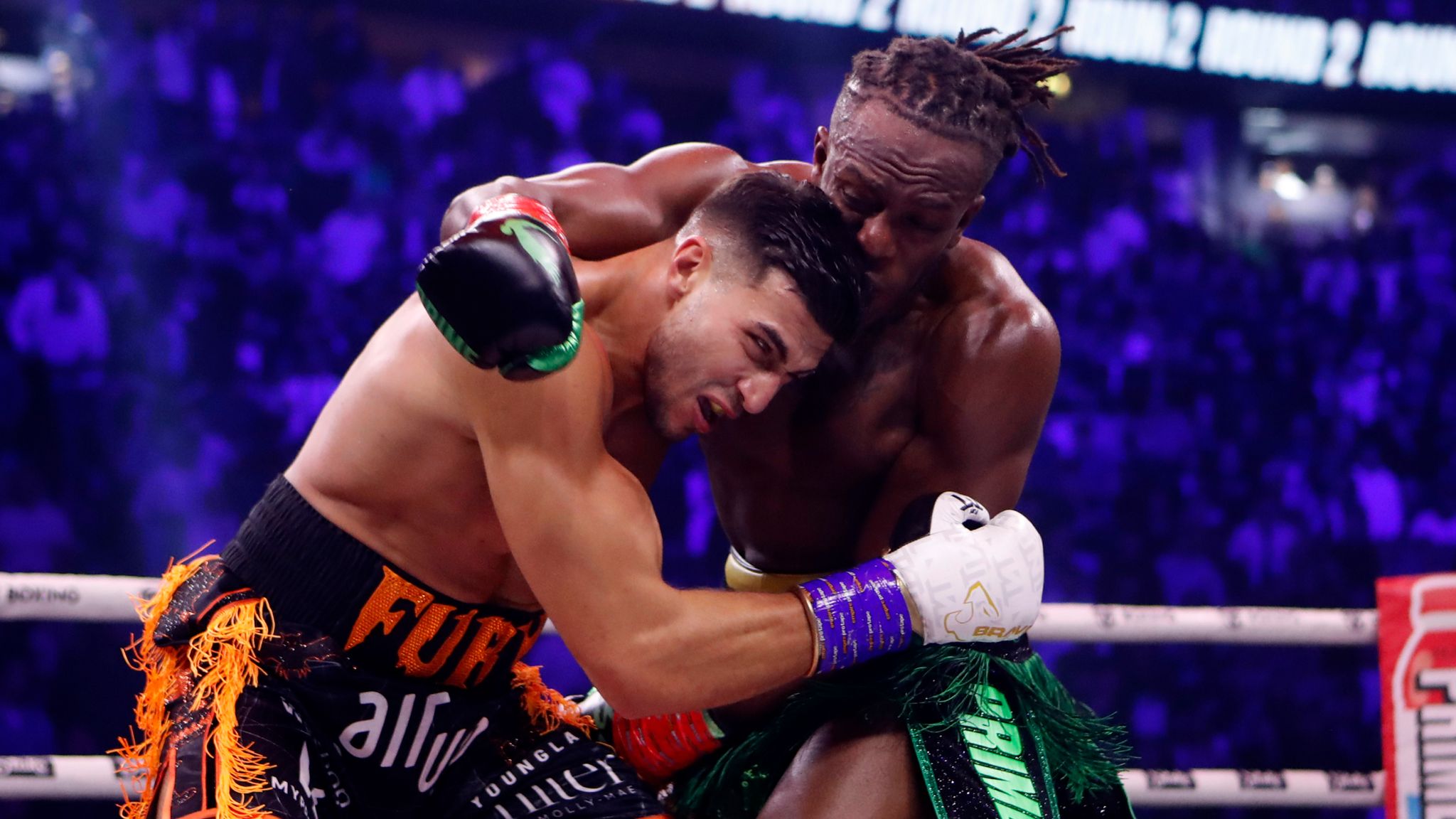
KSI vs Tommy Fury
One notable crossover boxing event took place at the AO Arena in Manchester, where YouTube star KSI faced off against professional boxer Tommy Fury. This event attracted a wide audience, engaging viewers from both the boxing and online content creation communities.
Tommy Fury describes his fight with KSI as a “circus”
The financial success of these events is often driven by pay-per-view (PPV) sales. Platforms like DAZN PPV have capitalized on the popularity of crossover boxing, offering exclusive streaming rights to high-profile matchups. Fans are willing to pay for the experience of watching these unique bouts, resulting in impressive pay-per-view buys.
Some of the most popular crossover fights include the following:
- Floyd Mayweather vs. Conor McGregor: Boxing legend Mayweather faced off against UFC star McGregor in a match that brought together fans of both boxing and MMA.
- Tyson Fury vs. Francis Ngannou: This anticipated bout will see WBC world heavyweight champion Fury take on former UFC heavyweight champion Ngannou.
While crossover boxing events continue to gain traction, critics argue that they may damage the integrity of the sport. Nevertheless, the excitement and spectacle surrounding these events cannot be denied. Crossover boxing matches provide a unique combination of athletic prowess and entertainment value, captivating fans from different sporting backgrounds and creating a new wave of interest in the sport of boxing.
Why Crossover Boxing is Gaining Popularity
As the bell rings, a new round in the evolution of boxing emerges. This isn’t just about the raw, unadulterated rivalry between seasoned pugilists anymore. Crossover boxing is the new entrant in the ring, blending traditional boxing with modern-day celebrity influence and social media stardom. The outcome is a marketing spectacle that’s roping in a new crowd to the sport.
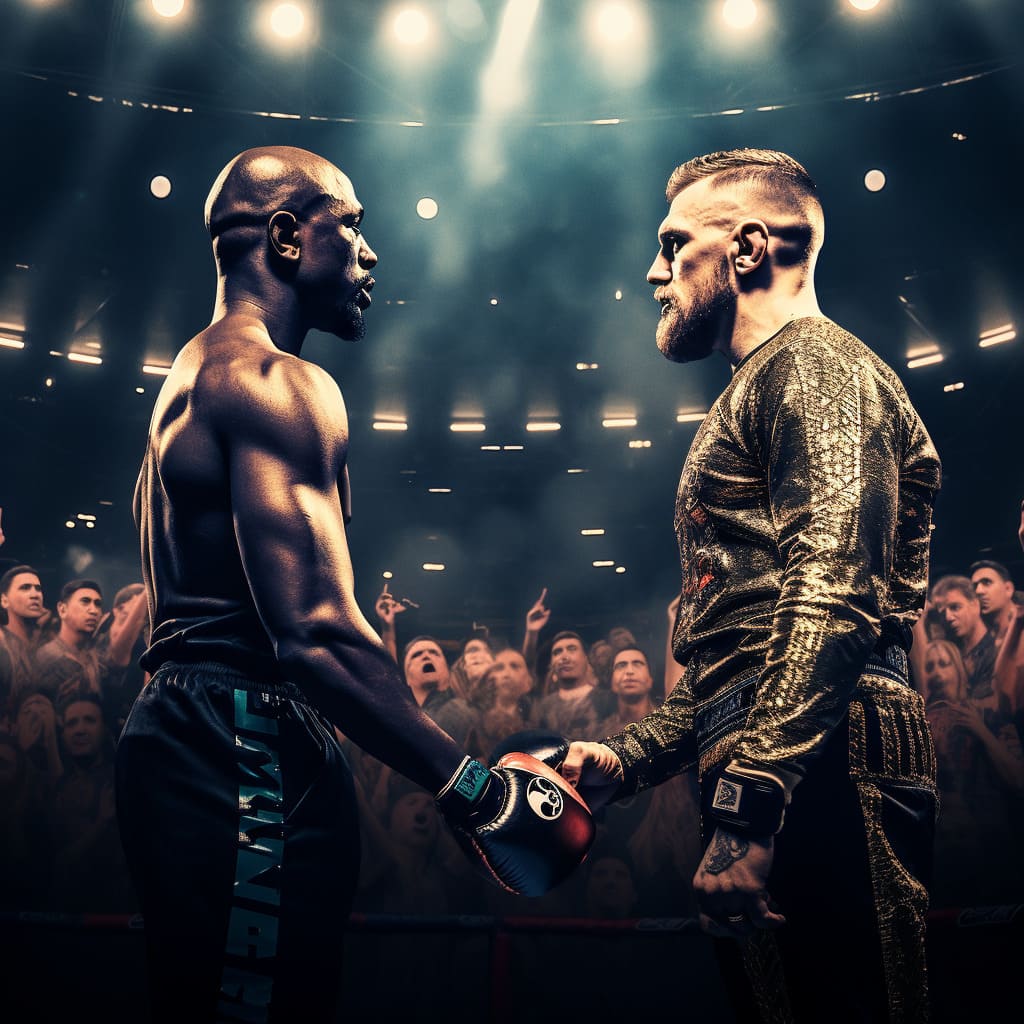
Marketing Aspect
The marketing machinery behind crossover boxing is nothing short of ingenious. Imagine a boxing ring where YouTubers, MMA fighters, or even musicians throw punches at each other. Each event is a cocktail of dramatic narratives, pre-match verbal volleys, and a social media frenzy leading up to the D-day. The hype generated is palpable, and the anticipation, electric. For instance, the Mayweather vs. McGregor bout in 2017 was more than just a boxing match. It was a cultural phenomenon, with marketing narratives spun around the ‘boxing rookie versus the undefeated veteran’. The hype was real, and the pay-per-view numbers, staggering.
- Event Hype: Each crossover boxing event is meticulously hyped up, turning it into a much-anticipated spectacle.
- Pre-match Banter: The verbal skirmishes leading up to the match add fuel to the promotional fire.
- Diverse Combatants: The mix of personalities from different realms adds a unique flavor to the promotion.
Attracting New Audiences to Boxing
With crossover boxing, the sport transcends its traditional boundaries, appealing to a demographic that probably never followed boxing. When Logan Paul steps into the ring, he brings along his massive YouTube following. The curiosity to see familiar faces in unfamiliar territory is a big draw. The sport is no longer just for the purists; it’s a grand stage where entertainment meets athleticism, pulling in crowds that revel in the dramatic unfolding of these events.
- Celebrity Pull: Familiar faces in the ring draw their massive fan bases into the boxing arena.
- Drama and Entertainment: The blend of drama and sport keeps the new audience hooked.
- Accessibility: Crossover boxing events are often live-streamed on social media platforms, making them easily accessible to a broader audience.
The ripple effect of crossover boxing’s popularity isn’t just a transient wave but seems like a tide that’s reshaping the shoreline of the sport. With every jab and hook, crossover boxing is not only landing punches but also, quite remarkably, bringing a fresh legion of fans closer to the sweet science of boxing.
The Future of Crossover Boxing
As the adage goes, “change is the only constant,” and the boxing realm is no stranger to this philosophy. Crossover boxing has emerged as a thrilling chapter in the sport’s narrative, and as we peek into the future, the promise of more exhilarating bouts looms large.
Predictions on the Evolution of Crossover Boxing
The trajectory of crossover boxing seems poised for an upward swing. The blend of entertainment and sport is a potent mix that resonates with a broad spectrum of audiences.
- Mainstream Acceptance: As crossover boxing events continue to draw large viewership, mainstream acceptance could burgeon, potentially elevating the sport to a mainstream staple alongside traditional boxing.
- Increased Sponsorship and Monetization: With growing popularity comes increased sponsorship opportunities and monetization, making crossover boxing a lucrative venture for all stakeholders involved.
The dawn of crossover boxing is a testament to the sport’s adaptive nature, embracing the new while honoring the old. As we await the clang of the bell announcing the next round of crossover bouts, the anticipation is a sweet reminder of the sport’s enduring appeal amidst changing tides.
In conclusion
The realm of crossover boxing has unfurled a tapestry of excitement, pulling in a diverse crowd while splashing the traditional boxing scene with a dose of modern-day spectacle. It’s a captivating narrative where personalities from various walks of life step into the boxing ring, bringing along a trail of drama, anticipation, and a fresh legion of fans. This fusion of sport and entertainment isn’t merely a fleeting trend but a burgeoning chapter in the long and storied history of boxing. As we reminisce on the thrill of past crossover bouts and await the promise of upcoming events, the essence of boxing continues to evolve. Crossover boxing is more than just a testament to the sport’s adaptability; it’s a riveting tale of how boxing is embracing the new wave of entertainment, ensuring its relevance and appeal in today’s rapidly changing social landscape. With every jab, hook, and knockout, crossover boxing is carving out its niche, promising a riveting blend of the old and new for fans old and new.
FAQ’s
What is the difference between professional boxing and crossover boxing?
Professional boxing is a traditional form of boxing where athletes train rigorously and compete professionally in the sport. It's a career and a livelihood for them. On the flip side, crossover boxing is a modern spectacle where individuals from different professional backgrounds, like YouTube, MMA, or even the music industry, step into the boxing ring. While the boxing is real, the essence of crossover boxing leans more towards entertainment and marketing spectacle rather than a professional sporting competition.
Who are some notable figures in crossover boxing?
Some notable figures in the world of crossover boxing include:
- Floyd Mayweather Jr. (Professional Boxer)
- Conor McGregor (MMA Fighter)
- Logan Paul (YouTuber)
- KSI (YouTuber)
These individuals have headlined events that brought significant attention to crossover boxing, blending the worlds of professional sport and entertainment.
How are crossover boxing events organized?
Crossover boxing events are organized similarly to professional boxing events, but with a heavier emphasis on entertainment and marketing. The match-ups are carefully selected to ensure a high entertainment value, often pairing individuals with substantial social media following or from different professional backgrounds to create a buzz. The promotional campaigns leading up to these events are extensive, leveraging social media and other platforms to build anticipation and attract a broad audience. Additionally, these events often feature a mix of professional boxing bouts and crossover bouts to cater to a wide range of viewers.
What is Crossover boxing?
Crossover boxing is a trend where individuals, often from non-boxing backgrounds like social media or other entertainment fields, participate in boxing matches for entertainment and promotional purposes.
